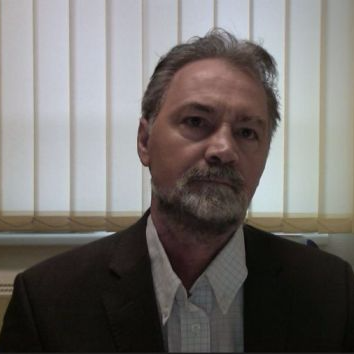Brain-Body Bidirectional Communication and Its Relevance for Cerebrovascular Diseases
A special issue of International Journal of Molecular Sciences (ISSN 1422-0067). This special issue belongs to the section "Molecular Neurobiology".
Deadline for manuscript submissions: closed (15 January 2024) | Viewed by 7237
Special Issue Editor
2. Center for Experimental and Clinical Medicine, University of Medicine and Pharmacy Craiova, 200349 Craiova, Romania
Interests: genomics; proteomics; brain; epilepsy; aging; neurogenesis; stroke; behavior
Special Issue Information
Dear Colleagues,
Despite recent progress, a large majority of ischemic stroke patients still exhibit neurological deficits in the long term, and ischemic stroke continues to be the most frequent cause of long-term disability. Nanosized small extracellular vesicles (sEVs) prepared from mesenchymal stromal cell (MSC) supernatants have previously been shown to promote neurological recovery and brain remodeling in ischemic stroke models. sEV-based therapies are not self-replicating and lack endogenous tumor formation potential, and therefore are rapidly approaching clinical trials in human stroke patients. Vascular risk factors associated with ageing (e.g., hyperlipidemia, diabetes mellitus) represent a major challenge in stroke therapies; they exacerbate inflammatory responses in the brain and compromise recovery. In previous work we have shown that MSC-sEVs efficaciously reversed the post-ischemic responses of polymorphonuclear neutrophils (PMNs), monocytes/macrophages, T cells and B cells in the peripheral blood and/or brain, indicating an immunomodulatory effect of MSC-sEVs that might confer their therapeutic activity. Using nanosizing EVs through colloidal engineering, in-depth cell biological characterization, in vitro and in vivo models, confocal and two-photon microscopy, transcriptomics and behavioral analysis, we would like to (a) comprehensively characterize immune signals mediating recovery-promoting effects of MSC-sEVs in the ischemic brain, (b) evaluate the consequences of age and age-associated vascular risk factors (i.e., diabetes, hyperlipidemia) for post-ischemic immune responses and the recovery-promoting effects of MSC-sEVs, and (c) examine the role of peripheral blood-derived PMNs and microglial cells in MSC-sEV-induced neurological recovery. By providing efficacy data in the aged ischemic brain exhibiting vascular risk factors, we hope to enable an in-depth estimate of the therapeutic efficacy of MSC-derived sEVs in human stroke patients.
In this Research Topic, we will focus on both the advances in endovascular treatment for cerebrovascular diseases and periprocedural complications. Moreover, we would like to accept the studies on the pathology, advanced diagnostic methods, mechanisms and new insight of treatment of cerebrovascular diseases, including hemorrhagic and ischemic diseases.
Therefore, areas of interest include, but are not limited to the following:
- The role of glial cells in stroke and other cerebrovascular diseases.
- Recent advances in basic research in stroke and other cerebrovascular diseases.
- Potential therapeutic drug targets or strategies in stroke and other cerebrovascular diseases.
- Acute phase treatment and long-term recovery after stroke.
- Glial -neuronal interactions after stroke and other cerebrovascular diseases.
Prof. Dr. Aurel Popa-Wagner
Guest Editor
Manuscript Submission Information
Manuscripts should be submitted online at www.mdpi.com by registering and logging in to this website. Once you are registered, click here to go to the submission form. Manuscripts can be submitted until the deadline. All submissions that pass pre-check are peer-reviewed. Accepted papers will be published continuously in the journal (as soon as accepted) and will be listed together on the special issue website. Research articles, review articles as well as short communications are invited. For planned papers, a title and short abstract (about 100 words) can be sent to the Editorial Office for announcement on this website.
Submitted manuscripts should not have been published previously, nor be under consideration for publication elsewhere (except conference proceedings papers). All manuscripts are thoroughly refereed through a single-blind peer-review process. A guide for authors and other relevant information for submission of manuscripts is available on the Instructions for Authors page. International Journal of Molecular Sciences is an international peer-reviewed open access semimonthly journal published by MDPI.
Please visit the Instructions for Authors page before submitting a manuscript. There is an Article Processing Charge (APC) for publication in this open access journal. For details about the APC please see here. Submitted papers should be well formatted and use good English. Authors may use MDPI's English editing service prior to publication or during author revisions.
Keywords
- ischemic stroke
- stroke
- cerebrovascular diseases
- age-associated vascular risk
- aged ischemic brain






